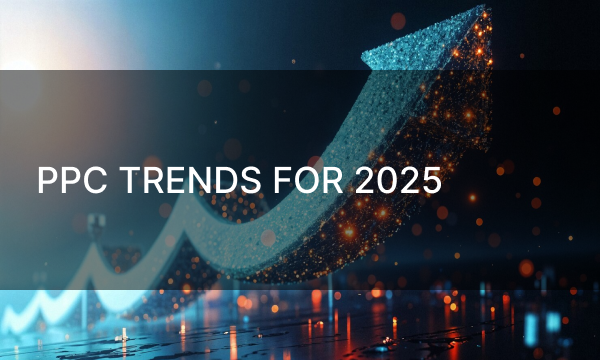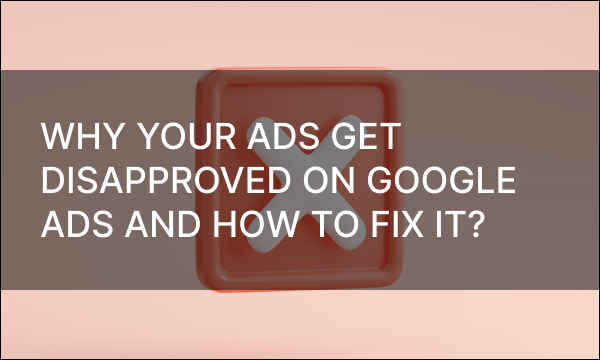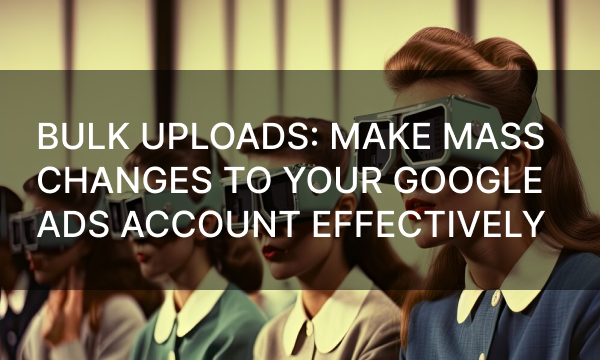Introduction to the value of underrated Google Ads and Microsoft Ads levers
Businesses often overlook the hidden gems of Google Ads and Microsoft Ads that help optimize campaigns, reach more targeted customers, and maximize marketing results. By using these underrated capabilities, you can elevate the effectiveness of your ad efforts and achieve greater success. They can greatly enhance campaign performance without major restructuring, unlock efficiencies, refine targeting, and drive higher conversions.
This article unveils nine underutilized PPC features with hidden potential. They give you advanced targeting options and data-driven optimization. By using these tools, you can take your PPC campaigns to the next level. Embrace new capabilities to gain a competitive edge, enhance your ROI, and achieve success that will align your PPC efforts with business goals.
Hidden Lever 1: Competitor Audiences
Understanding your competitors’ audiences by studying their customers’ demographics, behaviors, and motivations drives your business strategy. Analyze potential customers with similar interests and needs but loyal to your competitors. Unveiling their preferences and pain points will allow you to tailor your messages and offers to target and convert these groups.
Understanding consumer intent is crucial for effective marketing. Brands can leverage competitor targeting to focus on websites frequently visited by their potential customers. This provides insights into:
- What triggers product searches
- Which brands are considered for research, study, and loyalty
- How these interactions influence final purchasing decisions
This feature is available within Performance Max and allows you to target users who have visited similar websites or belong to specific customer segments. This can help you reach consumers who are already engaged with your competitors’ content or have similar interests. This approach will allow you to capture a share of your competitors’ audience and drive results.
Hidden Lever 2: Search Term Filters
 Photo by Rohit Choudhari on Unsplash
Photo by Rohit Choudhari on Unsplash
Search engines offer a huge amount of data, but the breadth of it leads to irrelevant results. Search term filters serve as a powerful tool for refining search. They provide access to a tailored selection of results that match the user’s specific needs. This method streamlines the search field, saves time, and provides valuable information that might remain hidden.
The ability to monitor search terms is particularly problematic for complex queries, where adding negative keywords or new targets can be difficult. While the keyword planner provides clues, comparing targeted keywords with actual search terms is crucial to bid on the best performing keyword variations. As an audience-centric approach replaces simply emphasizing keywords, using search term filters becomes valuable for prioritization.
Hidden Lever 3: Negatives At Structural Levels
While focusing on attracting the right audience with positive keywords is important, excluding irrelevant searches is equally crucial. By applying negative keywords at every level of PPC campaigns, you fine-tune your targeting with surgical precision. This ensures each click comes from a truly interested user. Eliminating irrelevant traffic reduces waste, resulting in targeted campaigns that drive conversion rates and optimize ROI.
The importance of including negative keywords:
- Precision Targeting: Negative keywords prevent ads from showing on closely related search terms that are irrelevant to your business, ensuring your ads appear only for highly targeted keywords.
- Budget Allocation: Negative keywords optimize your budget by directing funds towards campaigns and ad groups that have the highest potential for conversions.
- Cost Reduction: Negative keywords reduce wasting money on less effective keywords, allowing you to allocate resources for more profitable opportunities.
Hidden Lever 4: Audience And Placement Targets & Exclusions
Careful audience selection and strategic ad placement can ensure that ads reach the right people at the right time. Targeting and exclusion options can tailor campaigns to specific demographics, interests, and behaviors, resulting in more relevant and engaging ads. This approach ensures that ads are delivered to receptive audiences who have already shown interest in the products or services, maximizing the impact of marketing efforts.
Exclusions help marketers refine their campaigns by eliminating wasted ad spend. Excluding irrelevant placements and demographics prevents ads from reaching disinterested audiences or appearing in inappropriate contexts. This targeted approach allows for optimal ad performance, maximizing ROI and creating more effective, relevant campaigns.
Mistakes in audience targeting and specific placement targeting deprive campaigns of their full potential for precise customer engagement. These omissions leave untapped the power to optimize budgets and ensure that ads reach the intended audience. Here are some of them:
- Audience Targets
Not everyone who sees your content will be a potential customer, and focusing your efforts on the right audience is key to success. While interface design can sometimes make these settings less obvious, understanding how to use them is crucial for maximizing your impact.
- Visual Content Exclusions
To achieve the results and business goals, it is necessary to ensure precise exclusions for visual content by specifying topics, ad placements, and content keywords. Utilize the advanced ‘Where and When Ad Served’ report to identify specific placements for targeted exclusion or inclusion.
- PMAX Campaigns
PMAX Campaigns rely heavily on audience signals in the initial stages, but their impact decreases as the campaign matures. You can edit your audience signals for maximizing your PMAX campaign’s performance. Combining your own data with Google’s signals based on audience settings can significantly boost your campaign’s reach and effectiveness.
- Audience Library and Manager
By incorporating interest-based targeting and uploading conversion data, you can reach customers who have previously interacted with your brand to create highly targeted audiences. The full capabilities of these features are often underutilized. By exploring and strategically using them, you can make your ad campaigns exceptional, driving engagement and results.
Hidden Lever 5: Ad Group vs. Campaign-Level Settings Across Platforms
 Photo by Rubaitul Azad on Unsplash
Photo by Rubaitul Azad on Unsplash
Optimizing digital ad performance across platforms requires a nuanced understanding of the interplay between ad group and campaign-level settings. While these elements serve distinct purposes, their settings are interconnected, influencing each other’s effectiveness. Ad groups cater to specific target audiences, products, or services, allowing for tailored bids and messages. Campaign-level settings cover broader campaign elements like budget, targeting, and scheduling, impacting all internal ad groups.
For instance, a higher campaign-level budget ensures adequate resources for all ad groups to bid effectively. However, targeting specific keywords or demographics at the ad group level enables more precise targeting and optimization. Campaign-level settings like bid adjustments have a strong impact on ad group performance. Adjusting bids for specific ad groups based on factors like day time or device type allows for ad customization.
Google Ads: Campaign-Centric
When setting up Google Ads campaigns, Google prioritizes campaign-level settings for key elements like scheduling, budgets, location targeting, and negative keywords. You need to create multiple campaigns with separate budgets, each tailored to a specific objective. Consider using fewer ad groups per each campaign for better management and analysis.
Microsoft Ads: Combination of Settings
Microsoft Ads combines aspects of Google Ads, inherited from its similar campaign-level settings but also provides greater customization options at the ad group level. It allows for deeper control over locations, schedules, and specific placements. This flexibility enables creating highly tailored and targeted ad strategies to meet the unique needs of ad campaigns.
Hidden Lever 6: Segments For Precise Analysis
Network data, conversion metrics, time analysis, geosegmentation, and device optimization provide deep audience insights. Data segment analysis identifies potential gaps in ad campaign averages caused by different factors. For instance, a seemingly low CTR or CPC might be distorted by these settings. Segments provide deeper insight of ad campaign performance and thus enable informed optimization decisions.
Network analysis reveals the efficacy of traffic sources, while conversion data shows the whole user journey. Time segmentation targets messages during optimal hours or days, while geosegmentation enables precise targeting of geographic areas. Device segmentation tailors ad campaigns to specific devices for better user experience and conversions.
Hidden Lever 7: Conversion Tracking
Conversion tracking may drive the online presence of businesses. It involves measuring and analyzing user actions on a website, including purchases, form submissions, and newsletter subscriptions. This enables you to identify optimization areas, refine ad tactics, and achieve better results. Conversion funnel analysis reveals obstacles hindering user conversion.
Conversion tracking empowers businesses to refine their marketing tactics on the fly. Google Ads and automated bidding strategies boost campaigns based on specific conversion goals. By monitoring conversions, companies can identify marketing channels generating optimal revenue. This crucial data enables informed decisions on budget allocation, maximizing ROI and ensuring that marketing investments yield the desired results.
Hidden Lever 8: Hidden Reports
The complex task of managing and optimizing PPC campaigns may take a significant investment of time and resources. This is where hidden PPC reports come into play. Often concealed within the depths of ad platforms, they unlock a treasure trove of insights and data. By using them, brands can improve the results of PPC campaigns, gaining a competitive edge.
- Change History Report
Change History Report shows all changes made within an account. It differentiates between manual changes and automatic suggestions generated by Google. This report also indicates the significance of the changes, such as the addition of IP exclusions without any negative keywords or adjustments to targeting. This may suggest the use of fraud-filtering tools but a lack of attention towards campaign strategy.
- Call Extension Report
Call Extension Report provides detailed information about calls, such as the ability to listen to recorded calls and analyze call durations. It is especially useful for those who don’t use call tracking, as it offers valuable insights into the effectiveness of calls. This feature can help alleviate concerns about account performance by providing concrete data.
- Insight Section and Search Term Report
Google Ads has introduced a redesign that distinguishes core functions from insights. Search Term Report is now accessible within the Insight Section. It is crucial for analyzing search patterns and optimizing campaign strategies. Another valuable report in this category ‘Where and When Ads Showed’ provides detailed insights for Performance Max campaigns, eliminating the limitations of traditional black-box reporting.
Hidden Lever 9: Shopping Attributes In Merchant Center
Shopping Attributes in Google Merchant Center boost the product listings’ visibility and conversions. They provide Google with deeper insights of the promoted products, making it easier for prospects to find them. Shopping Attributes serve as virtual keywords, allowing the products to appear in precise search results that match user queries. This approach to attribute management creates a solid foundation for e-commerce success, driving organic traffic, boosting conversions, and increasing business profitability.
Conclusion
The hidden levers in Google Ads and Microsoft Ads can help you unlock PPC success. By leveraging underutilized features and strategies you can optimize campaigns for remarkable outcomes. You can now use powerful tools that dramatically improve your campaign’s effectiveness, relevance, and ROI. Mastering these hidden levers provides control over campaign elements for ad optimization and customization to meet your business goals.



